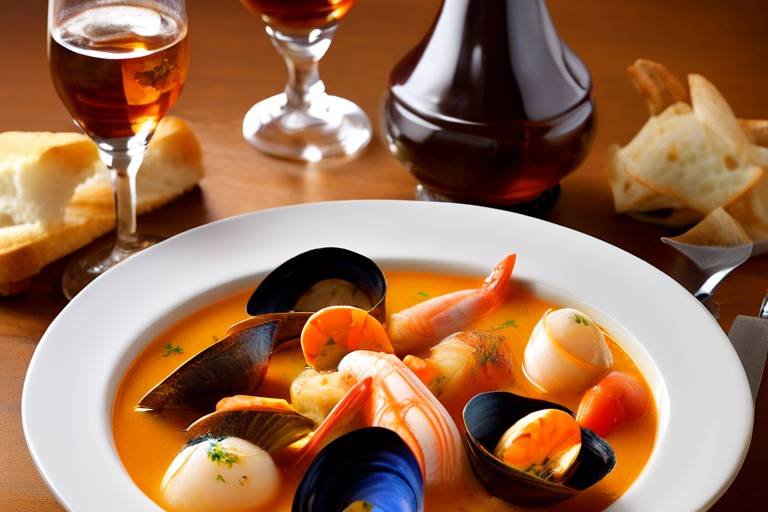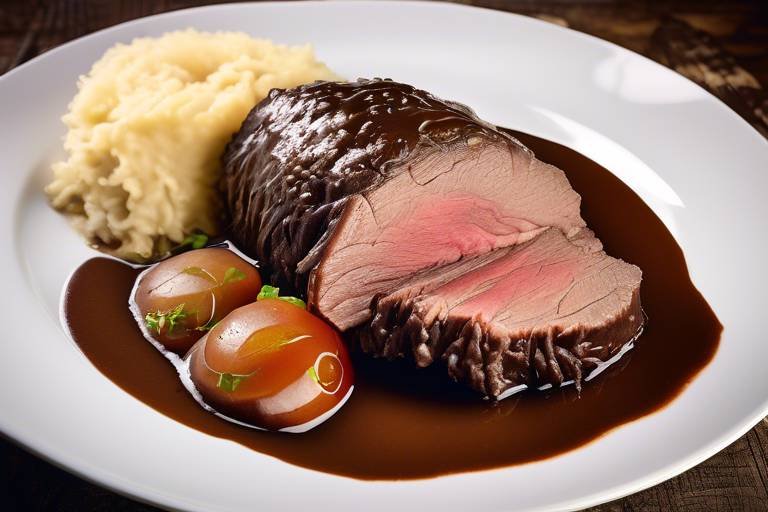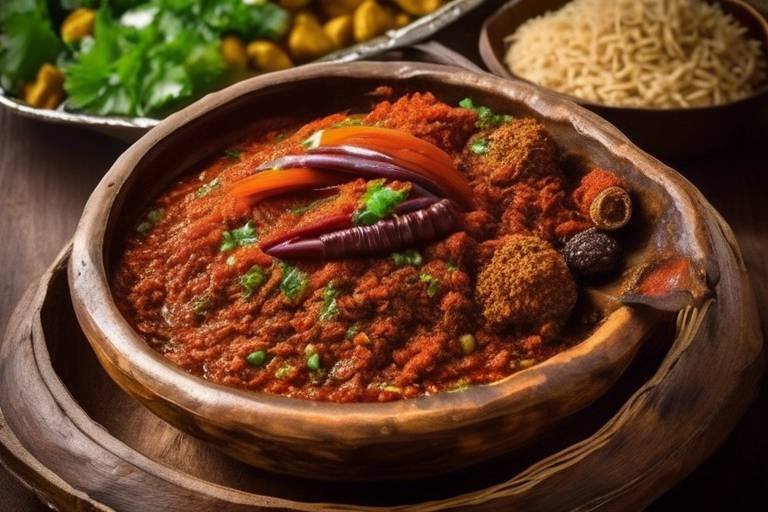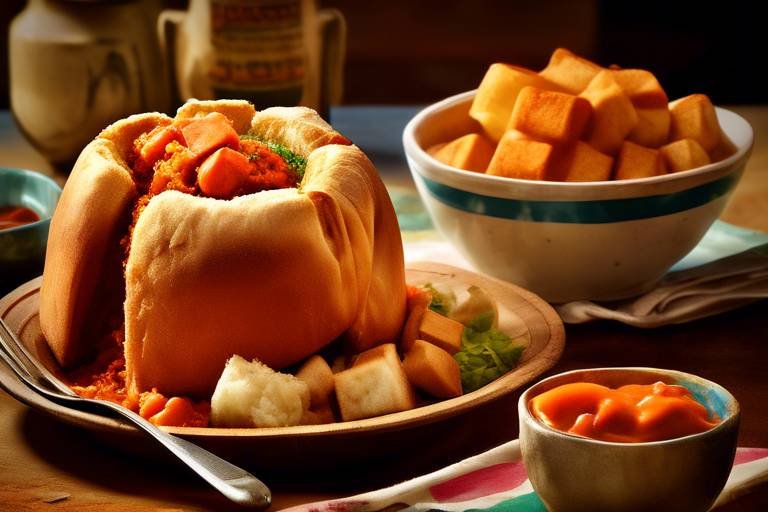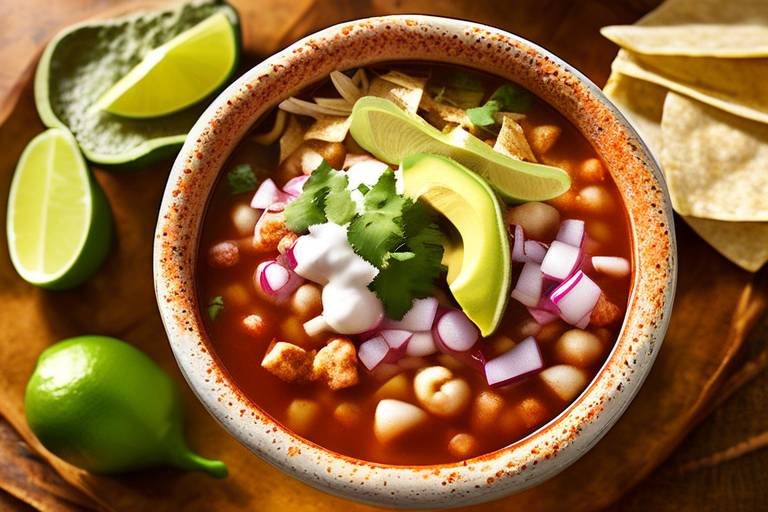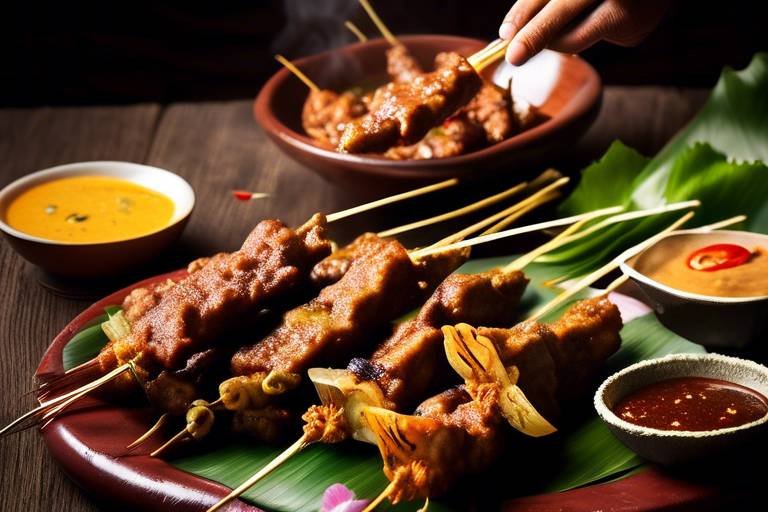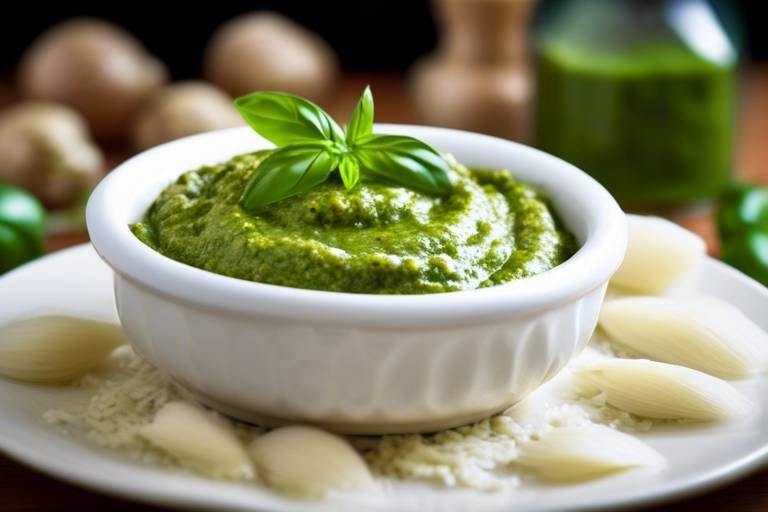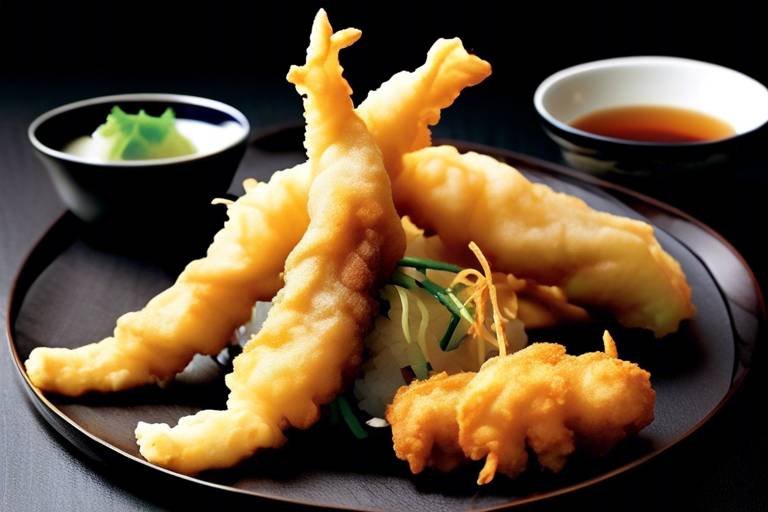A Taste of Authentic French Bouillabaisse
Are you ready to embark on a culinary journey to discover the exquisite flavors of authentic French Bouillabaisse? This traditional seafood stew is not just a dish; it's a cultural experience that captures the essence of French coastal cuisine. Let's dive into the world of Bouillabaisse and unravel its rich history, tantalizing ingredients, and the art of preparation that makes it a beloved delicacy.
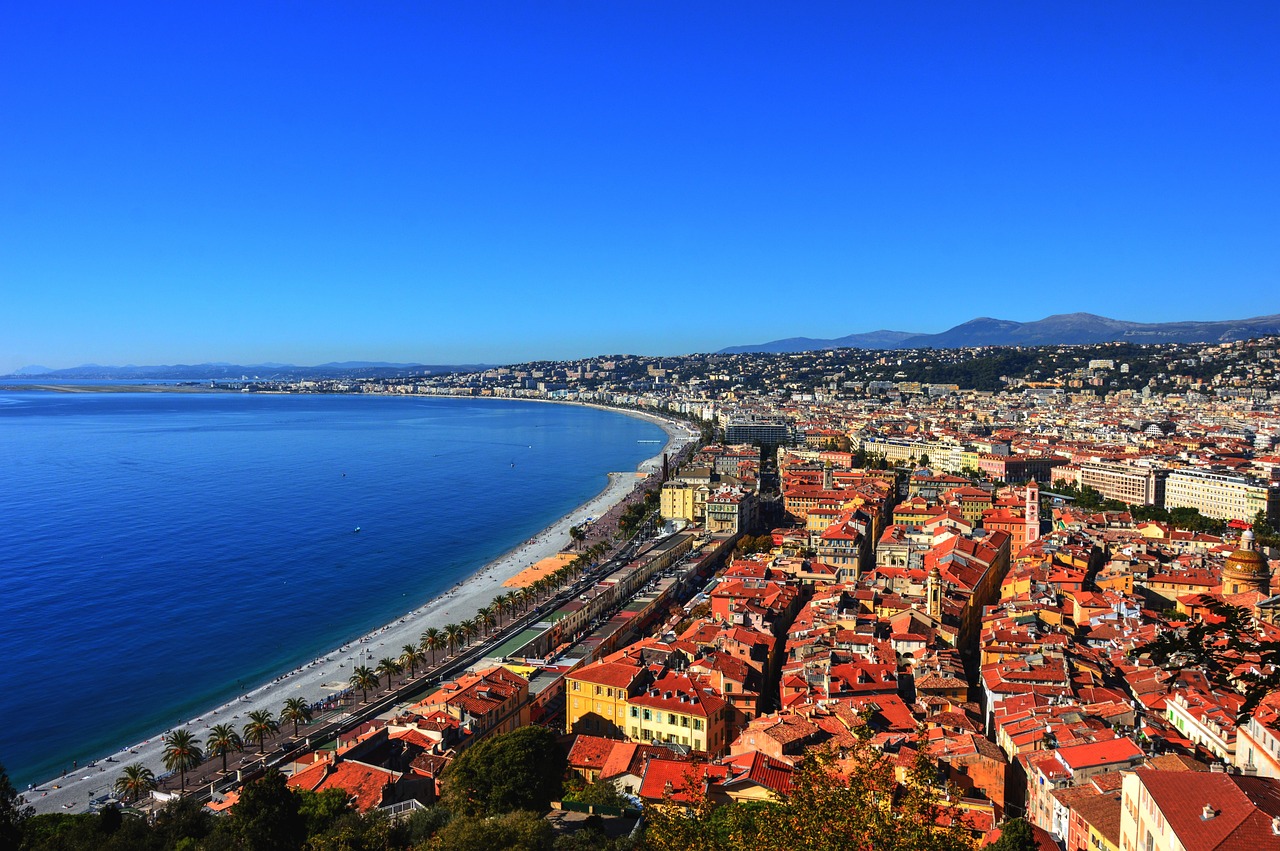
History of Bouillabaisse
When diving into the rich history of Bouillabaisse, one cannot ignore its humble beginnings in the vibrant port city of Marseille, nestled in the picturesque region of Provence, France. This iconic seafood stew has a story that dates back centuries, originating as a simple fishermen's dish crafted from the day's catch and humble ingredients.
Originally, Bouillabaisse was a way for fishermen to make the most of their leftover or unsellable fish, creating a hearty and flavorful stew that warmed both body and soul after a long day at sea. Over time, this rustic dish evolved from a practical meal to a symbol of culinary excellence, captivating the palates of locals and visitors alike.
The name "Bouillabaisse" itself is believed to stem from the Provençal Occitan word "bouillabaisso," which means to boil and simmer. This cooking method of simmering the fish with aromatic herbs and spices in a rich broth is at the heart of what defines Bouillabaisse and sets it apart from other seafood dishes.
As the popularity of Bouillabaisse grew, so did its reputation, transforming from a humble stew into a gourmet delicacy that graces the tables of fine dining establishments and home kitchens alike. The evolution of Bouillabaisse mirrors the culinary journey of France itself, blending tradition with innovation to create a dish that is as timeless as it is delicious.
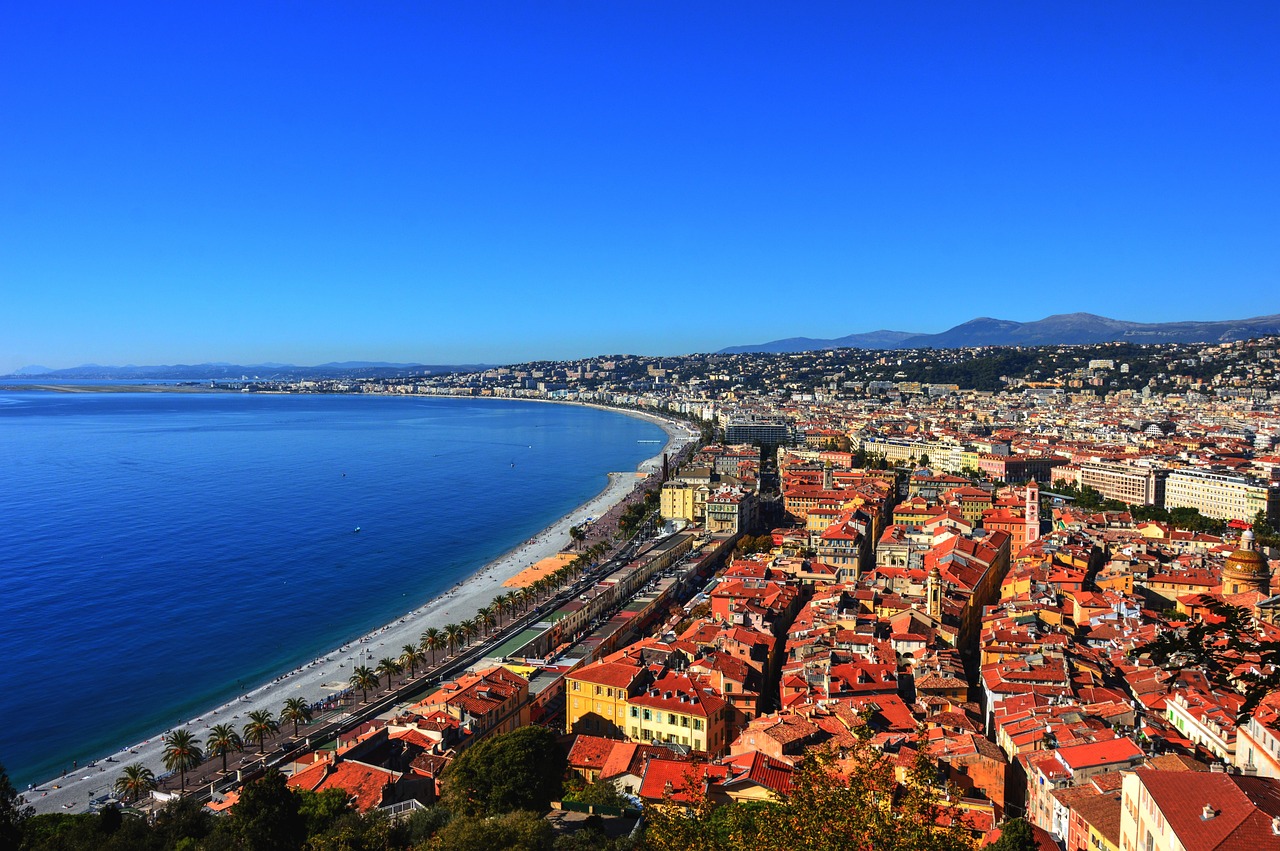
Key Ingredients
When it comes to creating a delicious and authentic French Bouillabaisse, the key lies in selecting the finest ingredients that bring out the rich flavors of this traditional seafood stew. At the heart of Bouillabaisse are a variety of fresh seafood, including fish and shellfish, which form the base of the dish. The combination of different types of seafood adds depth and complexity to the broth, creating a harmonious blend of flavors.
One of the essential ingredients that give Bouillabaisse its distinctive taste is saffron, a precious spice known for its vibrant color and unique aroma. Saffron infuses the broth with a subtle floral note, elevating the overall taste of the dish. Additionally, aromatic herbs such as fennel, thyme, and bay leaves are commonly used to enhance the flavor profile of Bouillabaisse, adding layers of complexity to the stew.
Quality ingredients play a crucial role in the success of Bouillabaisse, as the freshness of the seafood directly impacts the final outcome of the dish. Choosing the best quality fish and shellfish ensures that the flavors are at their peak, resulting in a truly memorable dining experience. The balance of flavors in Bouillabaisse relies on the quality and freshness of each ingredient, highlighting the importance of sourcing the best seafood available.

Traditional Preparation
Bouillabaisse, a traditional French seafood stew, requires meticulous attention to detail in its preparation to achieve its exquisite flavors. The process begins with selecting the freshest seafood available, typically a combination of various fish and shellfish like red snapper, sea bass, mussels, and shrimp. Each type of seafood contributes its unique taste to the dish, creating a harmonious blend of flavors.
Once the seafood is chosen, the next crucial step is creating the flavorful broth that forms the base of Bouillabaisse. This broth is infused with aromatic herbs such as saffron, fennel, and thyme, adding depth and complexity to the stew. The saffron not only imparts a vibrant golden hue to the broth but also lends a distinct earthy flavor that is characteristic of Bouillabaisse.
The cooking process involves layering the seafood in a pot, starting with the firmer fish varieties at the bottom and gradually adding the more delicate shellfish on top. This ensures that each type of seafood is cooked perfectly, preserving its texture and taste. The broth is then poured over the seafood, allowing it to simmer gently and infuse all the ingredients with its rich flavors.
Traditionally, Bouillabaisse is served with a side of rouille, a garlicky mayonnaise-like sauce, and crusty bread to soak up the savory broth. The dish is often presented in a communal style, with the seafood arranged beautifully in a large serving dish, inviting diners to savor each element of the stew.
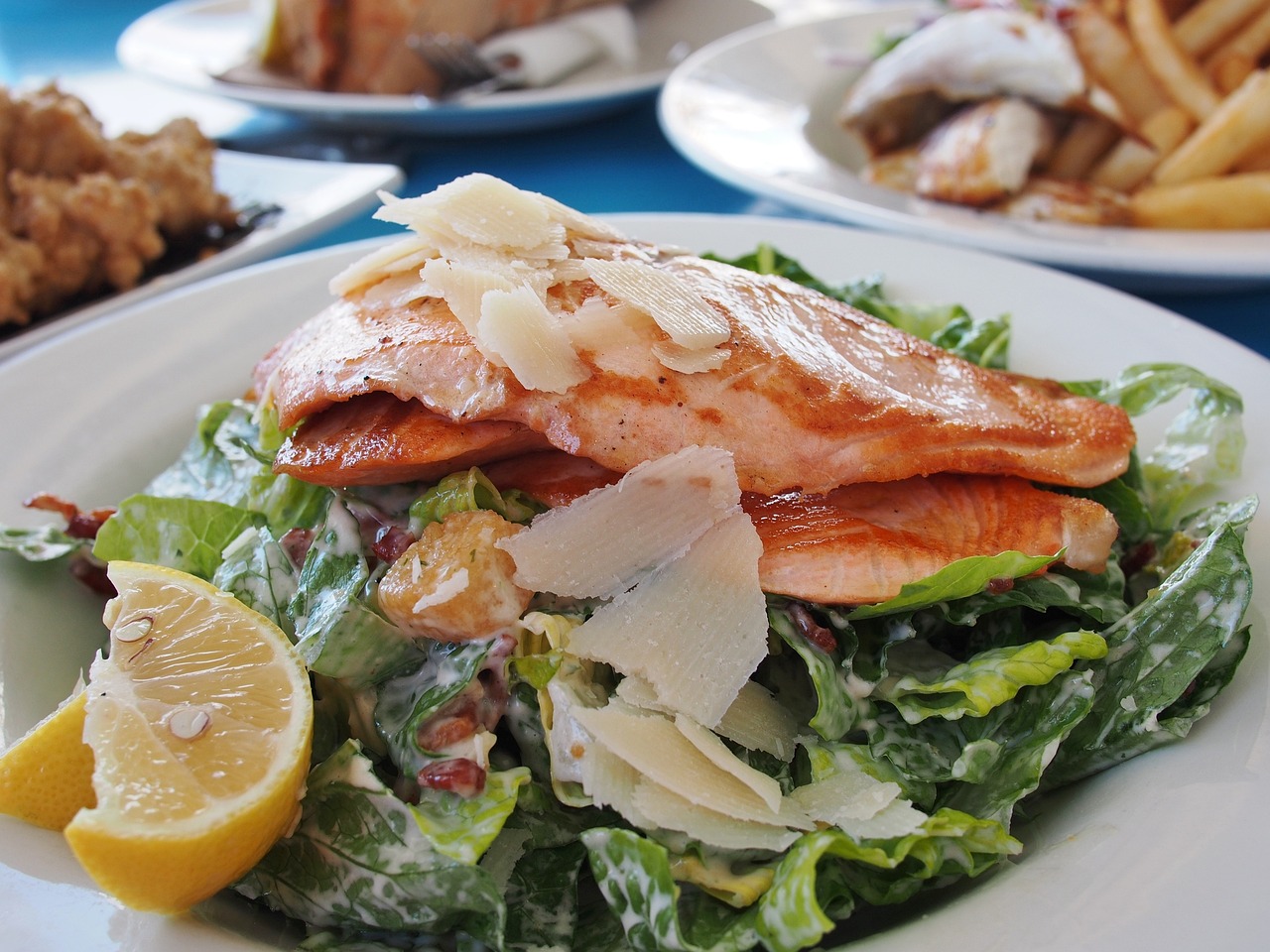
Regional Variations
When it comes to Bouillabaisse, each region in France has its own unique take on this beloved seafood stew, incorporating local ingredients and flavors to create variations that reflect the diverse culinary landscape of the country. From the traditional heartland of Marseille to the picturesque coastal town of Nice, the regional differences in Bouillabaisse offer a delightful exploration of French gastronomy.
In Marseille, the birthplace of Bouillabaisse, the stew is typically made with a mix of local Mediterranean fish such as red rascasse, sea robin, and monkfish, simmered in a rich broth flavored with saffron, garlic, and tomatoes. The dish is often served with a side of rouille, a spicy garlic mayonnaise, and crusty bread for dipping, creating a hearty and satisfying meal that captures the essence of Provencal cuisine.
On the other hand, in Nice, a city known for its vibrant markets and fresh produce, Bouillabaisse takes on a lighter and more delicate flavor profile. Local seafood like red mullet, scorpion fish, and langoustine are used to create a fragrant broth infused with herbs like basil and thyme. The stew is often accompanied by a side of aioli, a garlic mayonnaise, and served with toasted baguette slices, highlighting the subtle nuances of flavors in this regional variation.
As you travel across the different regions of France, you'll encounter a myriad of interpretations of Bouillabaisse, each offering a glimpse into the unique culinary heritage and traditions of the area. Whether you prefer the robust and bold flavors of Marseille or the light and aromatic notes of Nice, exploring the regional variations of Bouillabaisse is a culinary adventure that showcases the diversity and creativity of French cuisine.

Serving and Presentation
When it comes to serving and presenting Bouillabaisse, it's all about creating an experience that delights both the palate and the eyes. The art of serving this traditional French seafood stew involves more than just placing it on a plate—it's about elevating the dining experience to a whole new level.
One key aspect of serving Bouillabaisse is the proper plating technique. Typically, this dish is served in a deep bowl or a tureen to contain the flavorful broth and generous portions of seafood. The vibrant colors and textures of the seafood and aromatic herbs should be showcased beautifully in the presentation.
Accompanying Bouillabaisse with traditional side dishes like rouille—a garlicky saffron-infused mayonnaise—and crusty bread is essential. The rouille adds a creamy richness to the stew, while the crusty bread serves as the perfect vehicle for soaking up the delicious broth.
For an added touch of elegance, consider garnishing the Bouillabaisse with a sprinkle of fresh herbs or a drizzle of high-quality olive oil. These finishing touches not only enhance the flavors but also add a visual appeal to the dish.
When serving Bouillabaisse, presentation is key. Whether you're hosting a formal dinner party or simply indulging in a cozy meal at home, taking the time to plate the dish thoughtfully can elevate the entire dining experience. After all, a feast for the eyes is just as important as a feast for the taste buds.

Cultural Significance
Delving into the cultural significance of Bouillabaisse unveils a tapestry woven with the threads of French gastronomy and maritime heritage. This iconic seafood stew holds a revered place in the culinary landscape of France, symbolizing not just a dish but a connection to the coastal communities and their traditions.
Throughout history, Bouillabaisse has been more than just a meal; it has been a cultural emblem of the sea. Its roots are deeply intertwined with the fishing villages along the Mediterranean coast, where fishermen would create this hearty stew from the day's catch, infusing it with the essence of their livelihood.
As time passed, Bouillabaisse transcended its humble beginnings to become a symbol of conviviality and celebration. In the Provencal region, where it originated, serving Bouillabaisse became a ritual that brought families and friends together, fostering a sense of community and shared heritage.
The cultural significance of Bouillabaisse extends beyond its taste and aroma; it embodies the spirit of unity and tradition. The act of preparing and sharing this dish has become a cherished custom, passed down through generations as a way to honor the sea and its bounty.
Furthermore, Bouillabaisse has become synonymous with French cuisine on the global stage, representing the artistry and craftsmanship of French chefs. Its presence in fine dining establishments around the world serves as a testament to its cultural importance and enduring appeal.
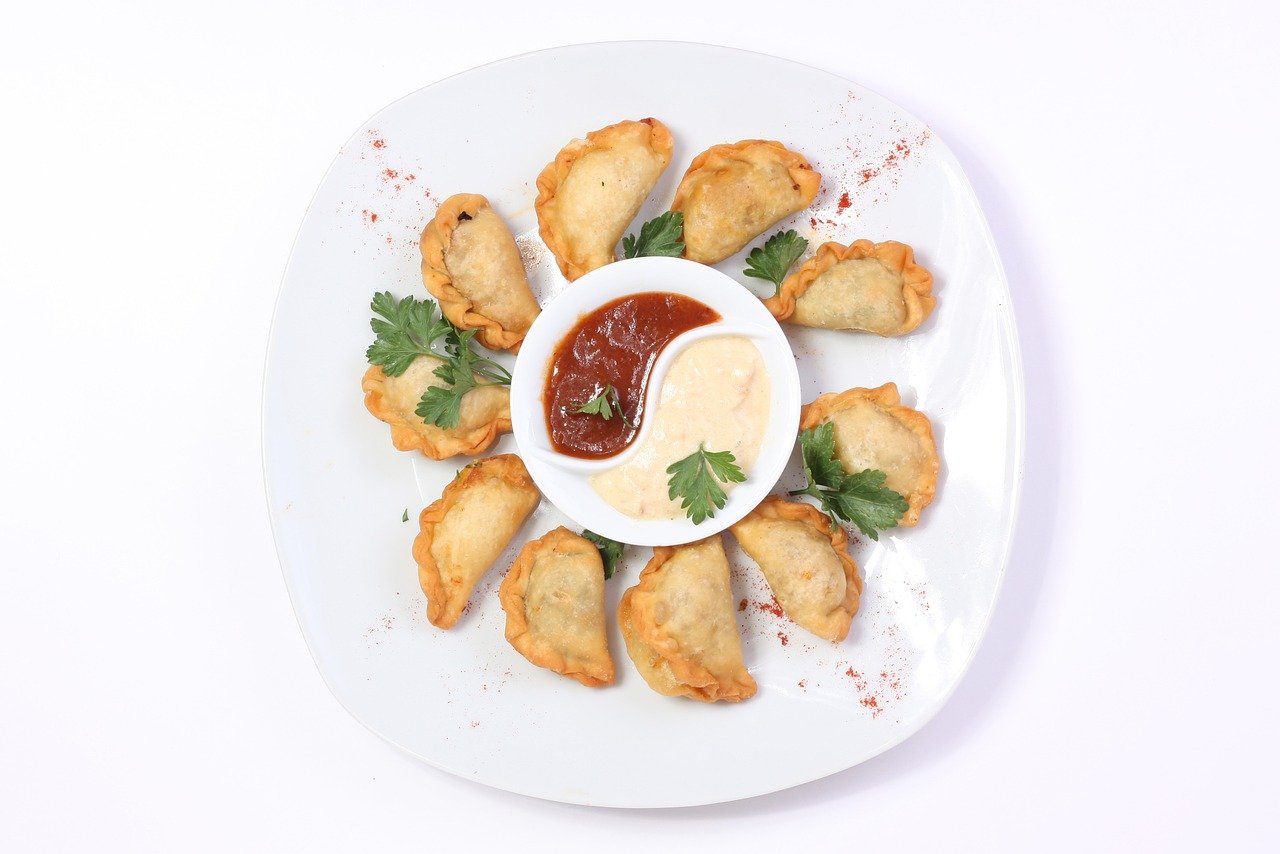
Modern Interpretations
Modern Interpretations of Bouillabaisse have seen chefs across the globe infusing this classic French dish with contemporary flair. While honoring the traditional roots of Bouillabaisse, modern interpretations often involve innovative techniques and creative ingredient combinations that push the boundaries of flavor profiles. Chefs are experimenting with unconventional seafood choices, unique herb and spice blends, and avant-garde presentation styles to reinvent this beloved stew for a new generation of diners.
One common trend in modern Bouillabaisse variations is the incorporation of exotic seafood options, such as lobster, squid, or even octopus, alongside the traditional fish and shellfish medley. This eclectic mix of seafood adds depth and complexity to the dish, creating a sensory explosion that surprises and delights the palate. Chefs are also exploring plant-based alternatives to seafood, catering to the growing demand for vegetarian and vegan versions of Bouillabaisse without compromising on taste or texture.
Furthermore, contemporary interpretations of Bouillabaisse often feature unconventional flavor pairings and ingredient combinations that challenge the traditional boundaries of French cuisine. Chefs are experimenting with global influences, incorporating spices and seasonings from diverse culinary traditions to create fusion versions of this iconic dish. The result is a harmonious blend of flavors that harmonize in unexpected ways, offering a unique and memorable dining experience.
In addition to reimagining the flavor profile of Bouillabaisse, modern chefs are also reinventing the presentation of this dish to elevate the visual appeal and overall dining experience. From deconstructed interpretations served in artistic arrangements to molecular gastronomy techniques that transform the dish into a culinary masterpiece, the modern presentation of Bouillabaisse is a feast for the eyes as well as the taste buds. By combining innovation with tradition, chefs are breathing new life into this timeless French classic.
Frequently Asked Questions
- What is the origin of Bouillabaisse?
Bouillabaisse originated in the port city of Marseille in Provence, France. It started as a simple fisherman's stew and evolved into a gourmet delicacy over time.
- What are the key ingredients in Bouillabaisse?
The key ingredients in Bouillabaisse include a variety of fresh seafood such as fish and shellfish, along with aromatic herbs like saffron and fennel. Quality ingredients are essential to creating an authentic flavor.
- How is Bouillabaisse traditionally prepared?
Bouillabaisse is traditionally prepared by selecting the freshest seafood, creating a flavorful broth, and cooking the dish in a step-by-step process to ensure perfection in taste and texture.
- Are there regional variations of Bouillabaisse?
Yes, different regions in France have their own variations of Bouillabaisse, incorporating local seafood and flavors to give the dish a unique twist. From Marseille to Nice, each region adds its own touch to the recipe.
- What is the cultural significance of Bouillabaisse?
Bouillabaisse holds cultural importance in French gastronomy, reflecting the maritime heritage of coastal communities. It is often associated with local traditions and celebrations, showcasing the rich culinary history of France.

